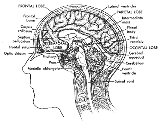Poker
Texas holdŽem statistik
Poker Statistics is about to find out the statistical probability of a chance to plot a preferred alternative, based on the hand you have.Some examples: The chance to get a pair in the hand is one on 17.
The chances of getting a face pair is one of 56.
The chance to get two different cards both of which are ten or higher is 1 of 11.
The chance to get two different cards both of which are ten or higher, and the color is one of 32.
The chance of getting A-x, i.e. an Ace and a face card is not 1 in 4.
The chance of getting two suited cards is 1 in 4
If you have two cards in different values there are a 1 in 4 chance that the flop will give you a couple. 1 in 49 that you will get a two pair and one in 74 that you get a triplet.
If you originally have a pair chances are 1 in 8.5 that you get a triplet. Do you have two suited cards is 1 in 119 chance that you will get a complete flush after the flop, and one of nine that you are going to have four cards to a flush (a flush draw).
A rule of thumb, then after the flop, when the 4th and 5th card remains so are your chances of improvement about 4% per card to help you.
One can also look at various starting hands probability of winning a hand. The probability that a higher pair will win against a lower pair (eg KK v 7-7) is about 81% to 19%. A medium-high pair against two over cards (eg 7-7 against AK) is about 54% to 46%. A pair on a higher and a lower card (such as QQ v AJ) approximately 72% to 28%. A high pair against two lower cards but switched to color (eg QQ against J-10f) approx. 81% to 19%. A high and a medium card against the two cards linked in between (such as A-10 against KQ) a 60% to 40%.



